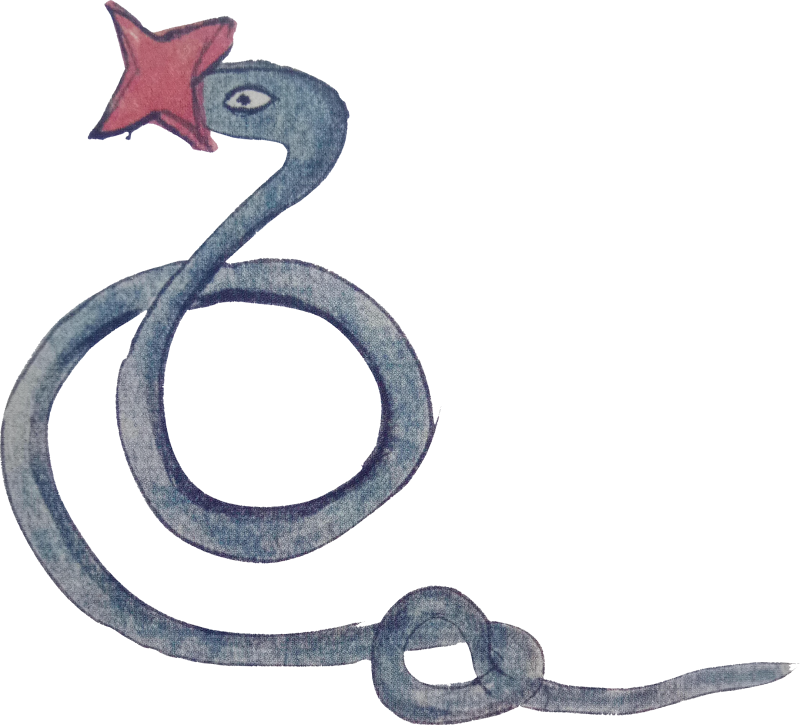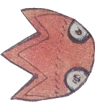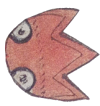
DAY FOUR: HARA ITA NO MUSHI
("Stomachache Bug")
Written by Jonathan Wojcik, Researched and Translated by Rev Storm
Design Review:
I really love the eerie, human eyes of this worm, and as with Gyoshu, the mouth is strikingly close to actual nematode anatomy, except for the fact that it is four-lobed rather than three-lobed. There are pretty much no other organisms who have that sort of "flower-shaped" mouth, and it's difficult to see even on the largest nematoda, so it's hard to guess at where our artist really got it from. The earliest known depictions of "microscopic" life in Japan wouldn't come until another couple centuries later!TODAY'S REAL PARASITE: Trichuris trichiura

Like Ascaris, this is another parasitic nematode that grows fairly large (a couple of inches) and infects humans all around the world. Its presence is often asymptomatic and can go unnoticed for years at a time, but heavier infestations cause extreme abdominal pain and diarrhea. This is not a nematode with petaled lips, but it earns the common name "whipworm" for its much thinner anterior end, and this is what it threads in and out of the mucous membranes of the host's large intestine, absorbing the fluid secretions of our internal tissues. What we mean here is that these worms basically "stitch" their long, threadlike heads through the walls of your rectum, the rest of their fat body hanging loose. Penetrating the host tissues multiple times per worm to remain so embedded, some other symptoms of a particularly dense whipworm population can include internal bleeding, secondary bacterial infection, abnormal fluid accumulation (edema), various nutritive deficiencies and even "rectal prolapse with visible worms," just in case you ever thought you would sleep again.
In young children, infestation by whipworm is especially no joke; it can impair both physical and cognitive development for life, robbing kids living in poorer, less sanitary environments of countless future opportunities. This is a sad truth of many parasitic infections that many of us unfortunately think of only as some rare, exotic hazard. People like to think of parasites as something only "dirty" people contract, but it's not so easy when there's simply no clean drinking water, no basic health care, not even enough clean clothes to go around.


































